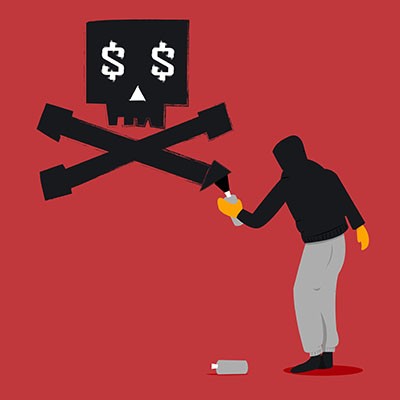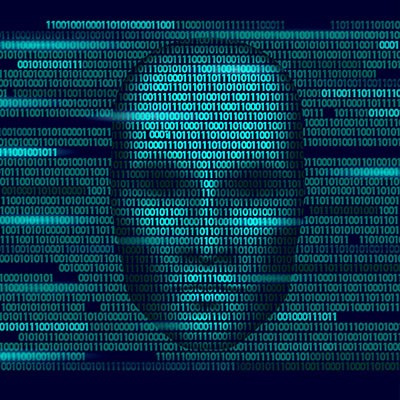Ransomware has been a major issue over the past couple of years. It has affected businesses of all types, government agencies, and many more. Today, we thought we would discuss how ransomware tactics have shifted in 2024.
Business Solutions & Software Group Blog
We’ve spent several weeks discussing ransomware's impact on various subsets of everyday life, including how it has affected customers and businesses. Today, we want to highlight the impact of ransomware on society in regards to economics and geopolitical security.
Last week, we explored ransomware's extensive "second-order harms" on downstream businesses and everyday people. This time, we’re returning to the "first-order harms"—the direct impacts on the businesses that fall victim to these attacks.
There are many important elements to cybersecurity, but some mistakes are significantly more costly than others. Today, we want to highlight some of the particularly egregious infractions that you can make regarding your cybersecurity measures.
When it comes to ransomware, you want to do all that you can to prevent an infection rather than respond to one. Of course, this isn’t always possible, so if you are struggling with a ransomware attack, you’ll need to act quickly to keep it from spreading. Let’s go over some of the steps that you’ll need to take to come out of a ransomware attack without too much scarring.
Imagine a malicious computer virus meticulously tailored for your organization, possessing a complete understanding of your software, hardware, and the configurations that could inflict maximum damage. This cyberthreat infiltrates your system with alarming precision, targeting the most vulnerable facets of your business, and wreaking havoc in its wake.
Ransomware is a serious issue for modern businesses of all sizes, many experiencing attacks on a fairly regular basis—and that’s before we factor in all the other cyberthreats that a business could likely have to contend with, and the fact that those responsible for these threats are getting craftier in how they spread them. Today, there’s a good argument to be made that the best approach to security is to trust no one and nothing… without verification, at the very least.
Ransomware has rapidly emerged as one of the most menacing and dreaded forms of malware attacks in use today. If you find yourself hoping it would simply vanish, it's completely understandable, but unfortunately, there is little reason to believe that ransomware is going away.
Of all the threats out there that loom over businesses, it seems as though ransomware is one of the most feared. It’s certainly one of the threats we talk about the most… and there’s good reason for this, too. If we seem to be overly alarmist, we aren’t. Ransomware truly is a considerable enough threat to warrant so much, well, consideration, and there’s a simple reason why this is.
Did you know that ransomware could cost businesses $265 billion by 2031? These numbers are nothing to scoff at, and they are indicative of a serious threat to not just your business, but the business world as we know it. Let’s go over some ways you can keep your organization safe from ransomware.
Let’s say, hypothetically speaking, your business was infected with ransomware, and—despite our advice not to—you decided to pay the ransom. Once the money’s handed over, that’s the biggest cost that you might be subjected to, right?
Not so fast. Ransomware has many more impacts than that, each of which come with their own costs as well. Let’s dive into some of the other factors that also contribute to the cost of ransomware.
For years now, cybersecurity experts have reiterated time and again that it was only a matter of time before smartphones would become a target for major cyberattacks like ransomware. The facts are that most people use smartphones and most of these devices aren’t really protected with active antivirus software. It stands to reason that ransomware is developing into a major trend in mobile cybercrime. Since ransomware is the grand-daddy of threats, keeping it off your systems is essential.
Cybersecurity is not an exact science, but it is something that you can definitely work diligently at. This will often help your organization do more to handle the risks of doing business in the online world. Unfortunately, the amount of attacks that target today’s businesses are starting to overwhelm a lot of the IT security efforts that they take and can lead to data loss or worse. This week, we will take a look at some of the worst data breaches of 2022… so far.
You know the term “ransomware.” It’s all over the news, and it’s because it’s a huge threat to all types of businesses, regardless of size or industry. If you want to protect your business’ future, you have to implement security measures that will allow you to not only address ransomware but prevent these attacks altogether. Depending on the type of data you store, you might find yourself more susceptible to ransomware attacks.
Ransomware is one of the worst strains of malware that your business could encounter. It makes cyber-extortion possible and can be a big problem for any business that happens to come across it. You need to learn what ransomware is and how to protect your business from malware and other cyberthreats.
The idea that cybersecurity will always be a major concern isn’t an extreme one. All one has to do is consider some of the threats we’re just starting to see now. Let’s take a few moments to consider what today’s threats might tell us about tomorrow’s.
Ransomware can be disastrous for any business that gets hit by it, but not always in the way that you might expect. It might threaten business continuity and compromise data security, but it can also directly impact the way that the public views your company. In fact, the decision you make about whether or not to pay the ransom can be a major deciding factor in whether a customer will stick with you.
One of the most dangerous threats out there is ransomware, and for good reason. In many cases, the problems from ransomware can have far-reaching and devastating consequences for businesses, no matter which industry they operate in. Let’s take a look at why ransomware is so problematic and what you can do to stop it.
There are many cybersecurity threats out there, but the one that has cemented itself in the minds of business owners in recent years is ransomware. Ransomware encrypts data on the victim’s devices, forcing them to pay a ransom for the decryption key. As you might imagine, this practice is quite lucrative for cybercriminals—some more than others, of course.
The ransomware attack against Kaseya’s VSA servers for approximately 1,500 organizations was yet another major challenge for businesses to overcome, and while most of the affected companies did not give in to the hackers’ demands, others felt forced to pay the ransom. The problem, however, is that some of those who did pay the ransom are now having trouble decrypting their data, and with REvil MIA, they do not have the support needed to decrypt their data.
Latest News
Our Site Has Launched!

Welcome to Our New Site!
We are proud to announce the unveiling of our new website at Business Solutions & Software Group!




















